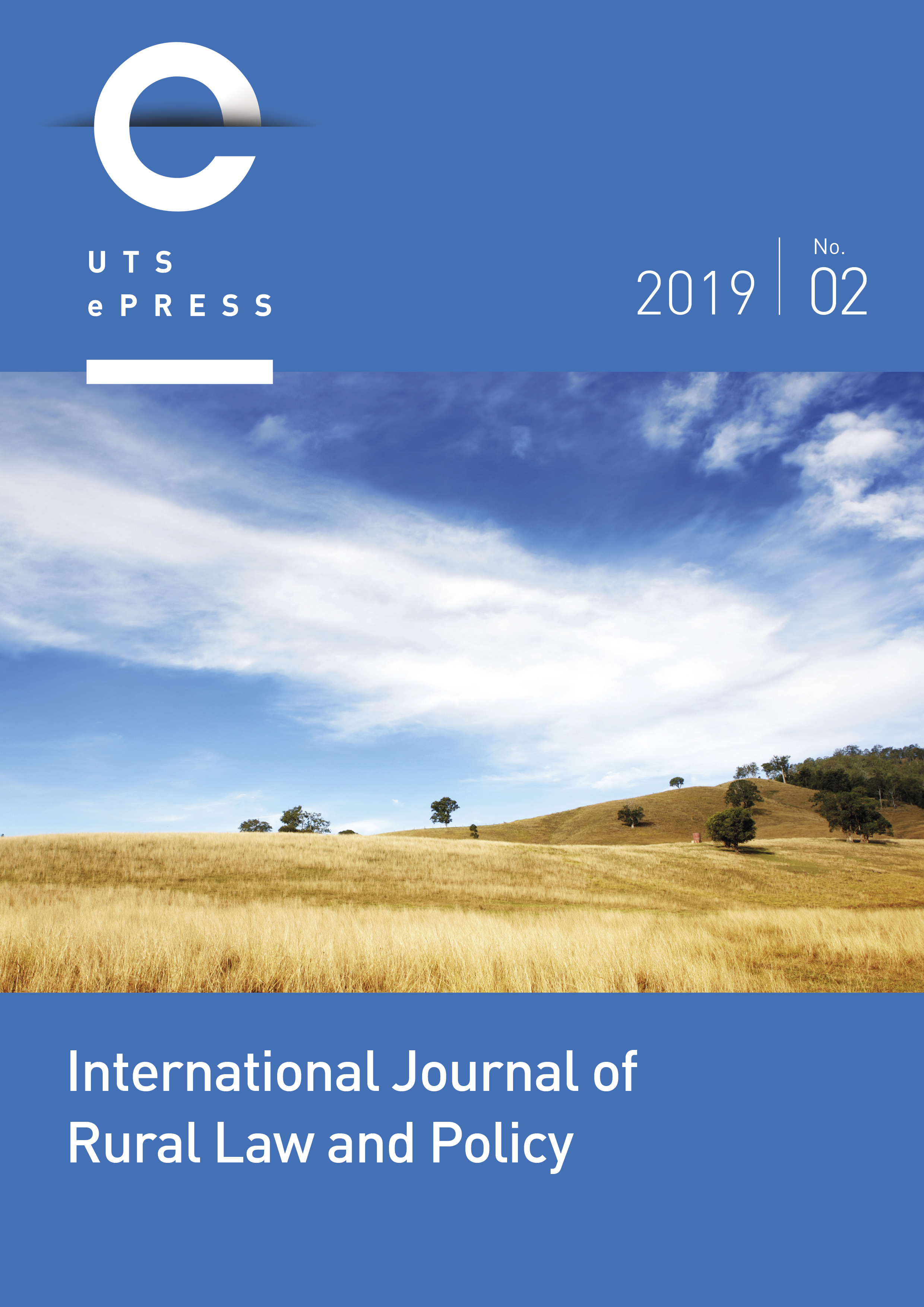Equal or unequal opportunities within the criminal justice system from a rural and regional perspective
Main Article Content
Abstract
Approximately a third of NSW criminal charges are dealt with in rural and regional courts. About a third of prisoners in NSW goals come from rural and regional NSW. However, resources – legal and therapeutic – available for rural and regional defendants do not match those available for offenders located in metropolitan areas. Twenty-one significant disparities are identified. Three sources of these disparities are also identified – court proceedings, geographical remoteness, and government failures. The majority of identified disparities, it is argued, is attributable to government failure. Recent changes to sentencing law and practices in the administration of sentences are looked at from a rural perspective and potential new and continuing disparities are identified. The limitations arising from the disparities to the exercise of judicial discretion with a rural setting are explained particularly with reference to sentencing.
Article Details
Section
Authors who submit articles to this journal from 31st March 2014 for publication, agree to the following terms:
a) Authors retain copyright and grant the journal right of first publication with the work simultaneously licensed under a Creative Commons Attribution License that allows others to share and adapt the work with an acknowledgement of the work's authorship and initial publication in this journal.
b) Authors are able to enter into separate, additional contractual arrangements for the non-exclusive distribution of the journal's published version of the work (e.g., post it to an institutional repository or publish it in a book), with an acknowledgement of its initial publication in this journal.
c) Authors are permitted and encouraged to post their work online (e.g., in institutional repositories or on their website) prior to and during the submission process, as it can lead to productive exchanges, as well as earlier and greater citation of published work (See The Open Access Citation Advantage Service). Where authors include such a work in an institutional repository or on their website (ie. a copy of a work which has been published in a UTS ePRESS journal, or a pre-print or post-print version of that work), we request that they include a statement that acknowledges the UTS ePRESS publication including the name of the journal, the volume number and a web-link to the journal item.
d) Authors should be aware that the Creative Commons Attribution (CC-BY) License permits readers to share (copy and redistribute the work in any medium or format) and adapt (remix, transform, and build upon the work) for any purpose, even commercially, provided they also give appropriate credit to the work, provide a link to the license, and indicate if changes were made. They may do these things in any reasonable manner, but not in any way that suggests you or your publisher endorses their use.
For Issue: "Occasional Papers" and before, the following copyright applied:
Authors, upon submission, communicate their acceptance of the following conditions:
The work, upon publication, becomes the property of the International Journal of Rural Law and Policy.
Upon publication, the work is licenced under a Creative Commons Attribution-Noncommercial_No Derivative Works 3.0 Unported License.
Permissions for subsequent publication/reprint and/or derivative works must be obtained from the Editors of the Journal of Rural Law and Policy
References
Bureau of Crime Statistics and Research (Bobscar), ‘Criminal Court Statistics 2017’ (Media Release, 29 May 2018) .
Poynton, Suzanne, and Felix Leung, ‘Early Indicators of the Impacts of the NSW Driver Licence Disqualification Reforms’ (Issue Paper No. 135, , NSW Bureau of Crime and Research Statistics, August 2018).
Bureau of Crime Statistics and Research (Bobscar) ‘Criminal Court Statistics: NSW Criminal Courts Snapshot: Court Workload by Offence Type, 2017’ .
Local Court of New South Wales, Local Court of New South Wales: Annual Review 2017 (Report, 2018) 4.
Woodburn, Jessie, Katrina Grech and Don Holmes, ‘Why Does NSW have Higher Imprisonment Rates than Victoria’ (2019) 145 Crime and Justice Bulletin; see also .
NSW Bureau of Statistics and Research, NSW Custody statistics *Quarterly update, March 2018).
Corben, S, NSW Inmate Census 2016 – Summary of Characteristics (Statistical Publication No 45, ISSN 08144 1215, October 2017, Corrective Services NSW).
National Rural Health Alliance, Illicit Drug Use in Rural Australia (Factsheet 33, June 2015) 2 <http://ruralhealth.org.au/sites/default/files/publications/nrha-factsheet-illicit-drugs-0615.pdf>.
Justice Health and Forensic Mental Health Network, Network Patient Health Survey 2015 14; see also Health – Justice Health & Forensic Mental Health Network, 2015 Network Patient Health Survey Report .
NSW Budget Estimates, 2017-18, 7 Justice Cluster .
Nicholson, J, ‘Reconsidering Traditional Custodial Sentencing Policies and Practices’ (2018) 147 Precedent.
NSW, Hansard, Legislative Assembly,–11 October 2011, 10:12am (Mark Spearman JC, Attorney General, Second Reading Speech).
Australian Law Reform Commission, ‘Justice Procedure Offences: Breach of Community Based Sentences’ in Incarceration Rates of Aboriginal and Torres Strait Islander Peoples (ALRC, Chapter 7) <https://www.alrc.gov.au/sites/default/files/pdfs/publications/dp84_07._justice_procedure_offences-breach_of_community-based_sentences.pdf>.
NSW Justice, ‘District Court Program Reduces Delays’ (Media Release, 9 January 2019).
Crimes (Sentencing Procedure Act 1999 (NSW)
Crimes (Sentencing Procedure) Amendment (Sentencing Options) Act 2017 (NSW).
R v Pullen [2018] NSWCCA 264.
